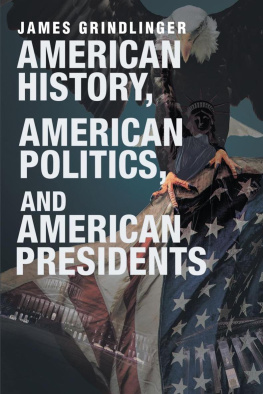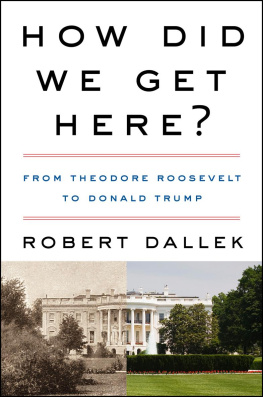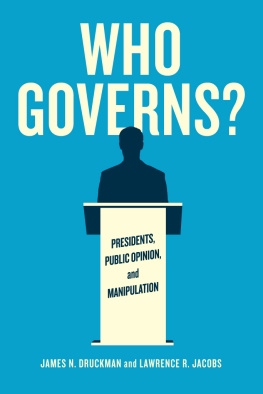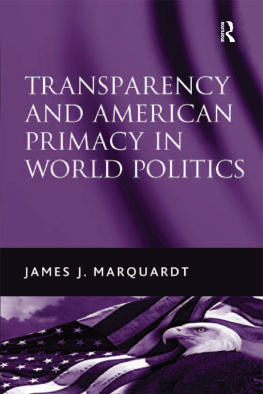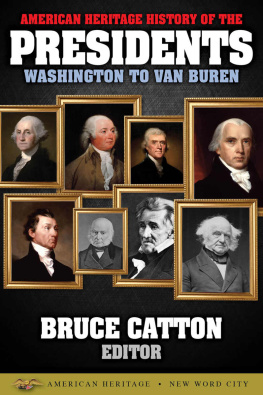Preface
S ince my childhood in the 1950s and the 1960s, I have been very interested in the overlapping subjects of American history, American politics, and American presidents. This book is a product of my decades-long study of these subjects. It includes much information about our presidents, such as their native states, home states, military service (if any), lengths of presidential service, and ages at death. But in the main, this book is an introduction to American history since 1789, the year that the American presidency began.
I have divided American history since 1789 into six periods. Each period coincides with the time that specified individuals served as president. For each period, the emphasis is on domestic policy, foreign policy, and presidential election results.
My goal in writing this book has been to give the reader a greater knowledge and understanding of our country. I hope that after reading this book, the reader will proceed to learn still more about American history, American politics, and American presidents.
Group 1 Presidents
17891825
T he Group 1 presidents (17891825) and their years of birth are George Washington (1732), John Adams 1735), Thomas Jefferson (1743), James Madison (1751), and James Monroe (1758).
Each was an adult when the American Revolution, which lasted from 1775 to 1783, ended. Each of these presidents had a substantial connection with the American Revolution, the Constitutional Convention (1787), or both.
During the American Revolution, Monroe served in the American Army, of which Washington was commander in chief. Jefferson authored and signed, and Adams signed, the Declaration of Independence (1776), which converted the American Revolution from a war for greater rights for the people of thirteen British colonies to a war for those colonies establishment as a free and an independent nationthe United States of America, the USA, the United States, or the US.
The Declaration of Independence also set forth the new nations basic political principles: We hold these truths to be self-evident, that all men are created equal, that they are endowed by their Creator with certain unalienable rights, that among these are life, liberty, and the pursuit of happiness. That to secure these rights, governments are instituted among men, deriving their just powers from the consent of the governed.
Independence for the United States of America was achieved in 1783, less than two hundred years after the founding (1607) of the oldest colony, Virginia, and a little over fifty years after the founding (1732) of the newest colony, Georgia. Each of the other eleven colonies was founded in the period from 1620 to 1681.
Those other eleven colonies were New Hampshire, Massachusetts, Rhode Island, Connecticut, New York, New Jersey, Pennsylvania, Delaware, Maryland, North Carolina, and South Carolina. The thirteen colonies became the original thirteen states of the USA. Pennsylvania almost borders onand each of the other twelve actually borders onthe Atlantic Ocean. The USA also includes thirty-seven other states and the District of Columbia, or DC. Coextensive with DC is the city of Washington, the US capital since 1800. Of those thirty-seven states: (a) only Maine and Florida border on the Atlantic Ocean; and (b) only Maine and West Virginia were carved out of original statesMassachusetts and Virginia, respectively.
In 1781, the Articles of Confederation became the USAs first constitution. But at the Constitutional Convention, over which Washington presided and at which Madison was a very prominent delegate, there was drafted a second constitution, hereinafter called the Constitution, which provided for a stronger national government than under the Articles of Confederations confederal system. However, the states remained quite powerful, so that there was a federal, not a unitary, system.
The Constitution was ratified by eleven states before 1789, by North Carolina in 1789, and by Rhode Island in 1790. The national government, also called the federal government, that was set up by the Constitution has existed since 1789 and includes three branches: (a) legislative, consisting of Congress, which includes two chambers, the House of Representatives (hereinafter House) and the Senate; (b) executive, headed by the president and the vice president; and (c) judicial, consisting of the Supreme Court and the lower appellate and trial courts (US Const., Arts. IIII).
The Constitution has never been superseded by a third constitution, but twenty-seven amendments have been added to it. An amendment is added to, and thus becomes part of, the Constitution if the amendment has been: (a) proposed by at least two-thirds of those voting in each chamber of Congress, or by a convention called by Congress on the application of the legislatures of at least two-thirds of the states, and (b) ratified by the legislatures of, or conventions in, at least three-fourths of the states (Art. V). Each of the twenty-seven amendments was proposed by Congress, not by a convention called by Congress. And all but one of the twenty-seven amendments was ratified by state legislatures, not by state conventions.
In 1789, Congress proposed twelve amendments, ten of which were added to the Constitution in 1791, and one of which was added to the Constitution in 1992, after having been ratified by enough state legislatures. The one added in 1992 is Amendment XXVII, which provides that no law varying the compensation of members of Congress shall take effect until an election of House members has intervened.
Those added in 1791, the first ten amendments to the Constitution, constitute the Bill of Rights, which prohibits the federal government from infringing on many rights and freedoms, such as the freedoms of religion, speech, and press, and the rights of assembly, to petition, to keep and bear arms, against unreasonable search and seizure, to jury trial, to counsel, against cruel and unusual punishment, and of the states.
The only amendment proposed by Congress in 1789 but never ratified by enough states to become part of the Constitution related to apportionment of House members. The first postBill of Rights amendment was added to the Constitution in 1795, during Washingtons presidency. US Constitution Amendment XI bars federal court suits against a state by citizens of another state or of a foreign country.
Washington was inaugurated as president on April 30, 1789, but presidential inaugurations from 1793 to 1933 occurred on March 4 of years immediately following presidential election years. While the first presidential election occurred in 1789, all later presidential electionsfrom 1792 to 2016occurred in years divisible by four. Washington served two terms, the second of which ended on March 4, 1797, so that he served slightly less than eight years.

